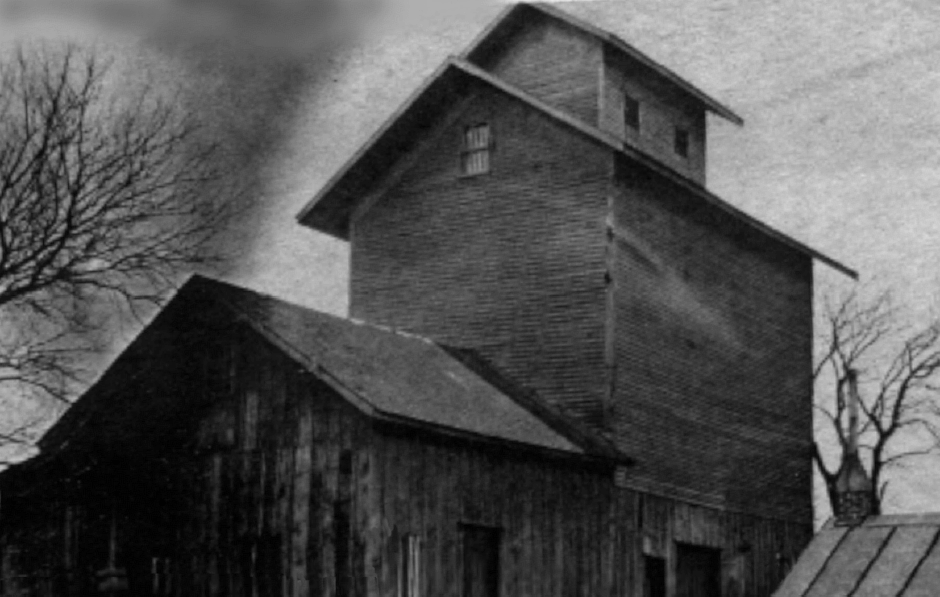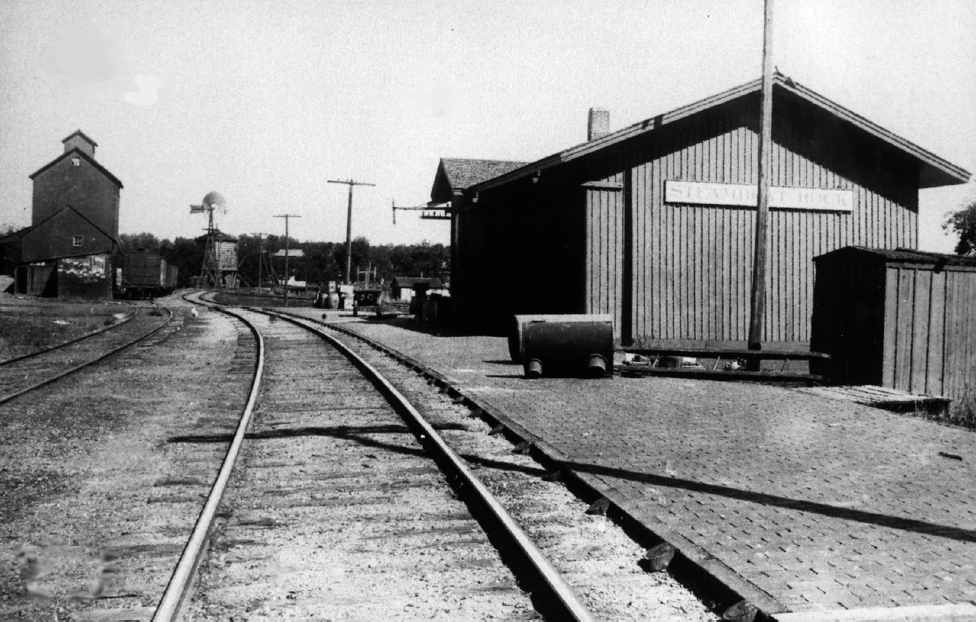
SRHS
Steamboat Rock Historical Society
TIMES ARE CHANGING
THE GRAIN BUSINESS

The Turner Elevator was built by D.W. Turner and A.A. Noyes, shortly after the railroad arrived in Steamboat Rock.
People continued to arrive, and some passed by. Coming from the east in covered wagons they passed up the good prairie farm land as it was no use to them, there being no railroad or market for their crops. A grist mill was built and the little wheat the farmers raised was made into flour mostly for local consumption.
At that time the United States already had some elevators in the Eastern section of the country, located on rivers and canals. The Chicago Board of Trade, the country’s first grain market, was formed in 1848, 20 years before the mass network of railroads was in place. But transportation was the key to developing the country grain business and the railroad would become that key.
In 1868, the railroad was in place in Steamboat Rock, the first network to transport grain to a cash market was at last a reality.
With the completion of the Railroad to Steamboat Rock, D. W. Turner and A. A. Noyes, began to purchase grain for shipment, and erected a small warehouse for grain on the south side of the tracks in Steamboat Rock. The area’s first country elevator was born.

The Turner Elevator just a short distance down the track from the depot in Steamboat Rock.
Dan Turner, a native of New York and ex-Civil War captain, was an unusual immigrant in that he brought a great deal of money with him. He started the bank in Steamboat Rock and had other business interests in addition to the elevator.
P.H. Hayden entered the grain business in 1870. In 1871 he erected a large and commodious elevator capable of holding 10,000 bushels.
In 1873 Dan Turner bought out Mr. Noyes share of their grain business, and also bought the business started by Mr. Hayden. By the end of the decade he was shipping 200,000 bushels annually.
Wheat was the principal crop raised in those years. Farmers brought it to town in sacks and carried them from their wagons into the warehouse on their backs. The first railroad boxcars were filled with a scoop
shovel.
© 2020 Steamboat Rock Historical Society | All Rights Reserved
Powered by Hawth Productions, LLC